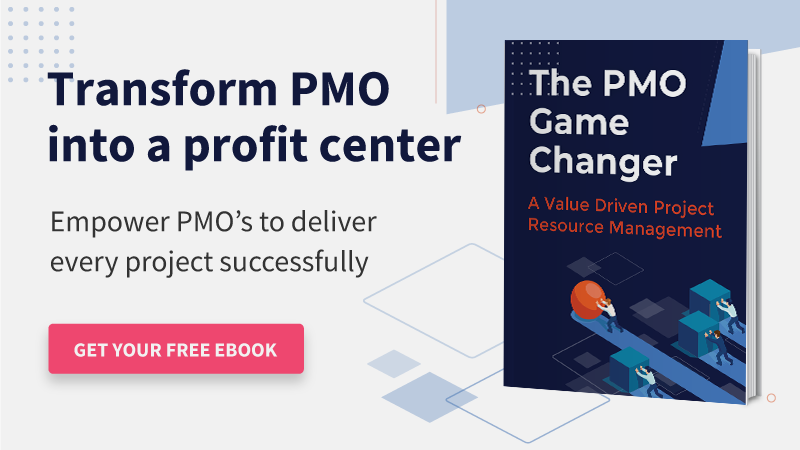In project-based organizations, resources play a critical role in ensuring project success. However, when employees take unexpected or extended leaves, it can disrupt workflows, hamper the quality of deliverables, and jeopardize project timelines. To address these risks, organizations must implement a robust leave management strategy that minimizes the impact of employee absenteeism on project momentum.
A systematic approach to tracking and managing employee leaves enables project managers to redistribute workloads effectively, meet deadlines, and maintain high team productivity. It also helps avoid last-minute firefighting, ensuring the project stays on track.
This blog sheds light on the importance of effective leave management and the best practices to prevent unplanned leaves.
But first, let’s understand the definition of leave management.
What is Leave Management?
Leave management is a structured process that a company implements to manage employees’ requests for time off. It covers various types of leave, including paid time off (PTO) – such as annual leave, sick leave, and vacation days, as well as maternity/paternity and unpaid leave.
Effective leave management involves planning, tracking, approving, and documenting employee absences. It helps maintain adequate staffing levels, sustain productivity, and comply with labor laws and company policies.
Now that we have understood the definition of leave management, let’s explore its varying types, encompassing planned and unplanned leaves:
Types of Leaves
Planned Leaves
Planned leaves are scheduled time off and typically require employees to notify their employers ahead of time. These leaves are often part of company policy and come with clear guidelines and allotments, enabling smoother operations even when employees are absent.
Here are the different types of planned leaves:
- Annual Leave
Annual leave refers to paid time off or vacation days granted to employees each year. The number of days varies depending on company policy, local laws, and employee tenure. These leaves are typically accrued over time, allowing employees to rest and recharge.
- Maternity/Paternity Leave
Maternity and paternity leave is time off given to new parents to take care of a newborn or adopted child. Many companies provide these leaves to support family bonding and accommodate recovery. The duration of maternity and paternity leave depends on national labor laws and company policies.
- Bereavement
Bereavement leave is time off given to employees following the death of a family member or close relation. This leave provides staff with the opportunity to grieve and manage the practicalities of a loss without the pressure of immediate work obligations.
- Public Holidays
Public or national holidays are mandatory leave days given according to the country’s legal holidays. These days are non-working for everyone in a particular region, and companies generally accommodate these holidays as a part of the paid leave structure.
Unplanned Leaves
Unplanned leaves are unscheduled absences that often occur without prior notice, usually due to unforeseen circumstances. These leaves can disrupt operational workflows, so organizations need flexible policies to manage them while balancing empathy and operational needs. Common types of unplanned leaves include:
- Sick Leave
Sick leave is granted to employees who fall ill and need time off to regain their health before resuming work. It allows them to focus on their well-being without the burden of work responsibilities. However, medical proof is required after a certain number of days.
- Emergency Leave
Emergency leave is granted when an employee faces an urgent and unexpected situation that demands immediate attention. Examples include a family crisis, sudden accidents, or other emergencies. Emergency leave policies help employees manage personal issues without risking job security.
- Casual Leave
Casual leave is a short-term leave option for personal reasons or emergencies that don’t require advance notice. It’s meant for minor events, and approval often depends on company policy and availability.
Let’s explore varied reasons for employees taking unplanned leave.
Causes of Unplanned Leaves
Unplanned leaves are often taken for personal reasons. However, if frequent unplanned absences stem from work-related challenges, it becomes essential for managers to step in and address the root cause. Below are some potential professional factors contributing to unplanned absenteeism:
Employee Burnout
A Deloitte study states, “Nearly 30% of the burnout is caused due to impractical deadlines or expectations.”
If a resource is persistently overloaded with work and has to meet unrealistic deadlines, it will eventually lead to burnout. In turn, they will start skipping work and take unscheduled leaves. Moreover, the tasks dependent on them will get delayed, which may have a domino effect, bringing the project to a grinding halt.
Lower Morale and Motivation
Employees engage better and feel motivated when their work is acknowledged and rewarded. If missing, it will naturally make them feel undervalued or trigger a sense of self-doubt. They may cope with the situation by not showing up to work and end up taking personal leave.
Read More: Signs of Low Employee Morale and How to Course Correct
Bullying or Harassment
If an employee experiences microaggressions or harassment at the workplace, they will likely avoid it by skipping workdays. Moreover, in the absence of an anti-harassment cell or committee, employees will not be able to report such incidents. This can lead to prolonged absences.
Mismatched Skillset
Sometimes, employees’ skills, capabilities, and interests are not aligned with their assigned projects. It can subsequently lead to disengagement and frustration, ultimately becoming the main contributors to unplanned leaves.
Workplace Culture Issues
The workplace culture is yet another reason for unplanned leave among employees. Factors such as a toxic environment, poor communication, micromanagement, lack of support, etc., can overwhelm or disengage employees, causing them to take unexpected time off.
Read More: How Can Your Work Culture Improve the Employee Experience?
Now, let’s understand how these factors can affect the overall health and success of the project.
How Does Unplanned Absenteeism Affect the Project’s Health?
In project-based work, tasks are often interconnected, each one relying on the completion of the previous one. Take a software development project, for example: from designing the prototype to coding and testing, every task relies on the other’s progress. Without the initial design, coding can’t begin, and without coding, testing is impossible.
Now, imagine one of your key team members- say, a senior developer suddenly takes unplanned leave for an extended period. With no contingency plan in place, the project comes to a standstill, causing delays and disrupting the entire workflow. This not only impacts timelines but can also lead to budget overruns.
In some cases, to keep the project moving, project managers may assign the task to another resource. While this may seem like a quick fix, it can cause overutilization and employee burnout, affecting the project’s health. Additionally, the pressure to catch up on lost time can lead to a decline in the quality of deliverables.
Unplanned absenteeism can also harm client relationships. Delays caused by absent team members can push timelines back, leading to client dissatisfaction and a potential loss of trust.
In a nutshell, unplanned absences have a cascading effect on the project’s progress, timeline, and finances, eventually impacting the overall profitability. However, with a proper employee leave management system in place, you can prevent these disruptions and keep the project on track.
Read More: How to Reduce Absenteeism in the Workplace?
In the following section, we’ll discuss some tips on how to reduce unplanned absences at your workplace.
How to Minimize Unplanned Absenteeism in the Workplace?
A project’s success and business profitability rely on the workforce’s talent and performance. It’s, therefore, imperative for project managers to ensure their well-being and deliver the projects on time and within budget. Here is how you can foster a robust leave management model.
Formulate a Clear Attendance Policy
A well-structured attendance policy is critical for setting standards regarding employee absenteeism. This policy should outline the types of leave available, guidelines on paid and unpaid leave, and the proper procedures for applying. It should also include how absences are tracked in the firm and the consequences of prolonged absenteeism.
When employees are aware of the organizational rules and regulations, they are better equipped to manage their leaves responsibly. This clarity can reduce unexpected leaves, promote accountability, and foster a more reliable workplace.
Invest in a Physical and Mental Wellness Program
Employees’ well-being has a direct impact on productivity and overall operational efficiency. Furthermore, when organizations put the mental and physical health of the workforce at the forefront, employees feel more valued. As a result, they are less likely to take unplanned leaves.
Therefore, organizations must invest in corporate wellness programs that include gym membership, psychological consultation, and regular health check-ups, or it can be even as small as curating a balanced lunch menu. Thus, prioritizing employee health and wellness creates a mutually beneficial culture for both employees and employers.
Avoid Micromanagement and Encourage Autonomy
“As per a Trinity Solutions study, 85% of employees said micromanagement negatively impacted their morale, and 71% claimed it interfered with their performance.”
Micromanagement can have a detrimental effect on team productivity. To prevent this, project managers should instill trust and autonomy in their employees. They must provide clear goals, communicate expectations, and then step back to create an environment that fosters accountability and innovation.
When employees are given authority over their work, they are more motivated, engaged, and likely to take initiative. It minimizes the risk of unplanned absences, maximizes employee productivity, and improves job satisfaction. This way, encouraging autonomy builds confidence, enhances problem-solving skills, and improves team performance.
Read More: 7 Effective Ways to Empower Employees and Prevent Micromanagement
Monitor and Address Uneven Workloads and Burnout Early
Monitoring uneven workloads is essential for reducing unplanned absenteeism in the workplace. Excessive tasks can lead to employee burnout, decreased morale, and higher absenteeism rates, making it imperative for managers to regularly assess workload distribution across the team.
To address workload imbalances, managers should ensure that tasks are evenly allocated so that no one is overly booked or sitting idle. Additionally, open communication should also be prioritized to help employees express their concerns about workloads early on, which enables timely adjustments and helps prevent burnout.
Provide Flexible Work Policies
Achieving a better work-life balance is crucial for enhancing employee well-being and overall company productivity. Implementing flexible work policies allows employees to tailor their schedules to better balance personal and professional responsibilities, resulting in better work-life balance.
Firms can offer flexible options such as remote or hybrid work, compressed workweek, flextime, staggered hours, swift swapping, etc. When employees have greater control over their work schedules, they experience lower stress levels. As a result, these policies contribute to higher job satisfaction and engagement, resulting in lower unplanned absences.
Build the Right Infrastructure for a Better Work Environment
Forbes says 70% of employers have improved their physical environments to encourage healthy behaviors.
A company’s physical work environment and culture are critical to employee productivity. Thus, employers must build the right infrastructure to foster a positive work environment that boosts team efficiency and drives business growth.
Organizations can invest in ergonomic workstations, advanced communication systems, robust security measures, and efficient layouts. When employees have access to an environment that meets their needs, they experience less stress and fewer work-related frustrations, resulting in fewer unplanned leaves and higher overall performance and engagement.
Integrate IDP in Your Work Policy
Every employee in your firm has certain goals and aspirations to excel in their career. When their goal aligns with the firm’s ultimate vision, they will engage themselves better. They expect that their development will be considered while they work for you.
A manager must create Individual development plans to cater to the resource’s professional development. You can conduct regular one-on-ones to learn about their future goals and plans. If your employees see that their growth matters to the company, they will stay with you for the long haul.
Read More: Importance of Skill Development in Making Your Workforce Future-Ready
Promote Open Communication
Encouraging transparent communication is essential to reduce unexpected employee absences. Managers can create a 360-degree feedback loop, allowing for constructive feedback and promoting input from all team members. This approach fosters open discussions around strengths, development areas, and expectations, making employees feel valued, supported, and more committed to their roles.
Employees should also have a safe space to discuss personal or work-related issues affecting their attendance, such as workload stress, health concerns, or family matters. This level of transparency strengthens trust and engagement between employees and management, helping to address potential challenges early on and reducing the likelihood of sudden absences.
Timely Reward & Recognize Employees
Timely appreciation through rewards and recognition, such as bonuses, appreciation emails, or small incentives, is essential for motivating employees and fostering a positive workplace culture. When employees feel their hard work is acknowledged, they are more driven to perform consistently and maintain a strong attendance.
Recognition also cultivates a supportive work environment that keeps employees engaged and helps reduce unexpected absences. A culture that values appreciation can build team cohesion, strengthen morale, and boost overall job satisfaction, ultimately benefiting employees and the company.
Read More: Employee Recognition Programs: Types, Benefits, and Best Practices
Now, let’s explore how a resource management tool can help manage unplanned absenteeism effectively.
How Can a Resource Management Tool Help with Unscheduled Absences?
An intuitive resource management software can help companies manage the workforce efficiently, reduce unplanned absenteeism, and boost operational efficiency. Here is how:
Assign the Right Resource to the Right Task
Managers can gain 360-degree visibility into employees’ professional attributes such as roles, skills, cost rate, locations, etc. This visibility, combined with a robust resource scheduler, allows managers to identify and allocate the best-fit people to the right job. By ensuring component allocation, firms can ensure employees are productive and engaged, resulting in lower unplanned leaves.
Optimizes Resource Utilization
The tool helps managers optimally utilize the resources by providing them with a birds-eye view of all the resources and projects along with color-coded heatmaps to flag over and under-utilization. This feature enables managers to take timely corrective actions, balancing workloads effectively and reducing the chances of burnout or stress-related absences.
Read More: What is Resource Utilization? A Complete Guide to Improve Business Efficiency
Create a Backup Plan for the Critical Tasks
When drawing out your project plan and scheduling resources for the project tasks, you should ideally create a backup plan for the critical roles. The tool allows you to book generic resources or placeholders for such tasks, preventing delays from unplanned absences. This feature ensures that a backup is ready to step in seamlessly if a key team member is unavailable, helping to maintain the project schedule.
Keep a Buffer During Capacity Planning
The tool’s forecasting and capacity planning can help managers forward plan pipeline projects and their resource requirements. The capacity vs. demand report allows you to analyze whether there is an excess or shortage of workers. Thus, it enables you to implement corrective treatments, such as creating a resource buffer to mitigate demand gaps.
Read More: What is Resource Capacity Planning? An Ultimate Guide for Every Project Manager
Identifies Skill Gap for Training
With the help of a skill matrix, managers can gain deep insights into each team member’s capabilities and skills. Moreover, they can stay forewarned of upcoming certificate expirations. Accordingly, managers can arrange tailored training programs to address the gap.
The Takeaway
Firms must foster a work environment where employees feel motivated, valued, and supported. By implementing the strategies outlined above, you can significantly reduce unplanned absenteeism and create a culture that drives better performance and engagement. Additionally, using the right tools can help you effectively manage unexpected leaves, minimizing disruptions and maintaining productivity.
So, how have you been managing unscheduled absenteeism so far?













